Using SET GLOBAL log_slow_verbosity='query_plan,explain'; on a slow log, I get a lot of output, but I am struggling to understand the explanation.
# User@Host: root[root] @ [10.0.1.5]
# Thread_id: 31 Schema: enterprise QC_hit: No
# Query_time: 0.654855 Lock_time: 0.000245 Rows_sent: 50 Rows_examined: 279419
# Rows_affected: 0
# Full_scan: Yes Full_join: Yes Tmp_table: Yes Tmp_table_on_disk: Yes
# Filesort: Yes Filesort_on_disk: No Merge_passes: 0 Priority_queue: Yes
#
# explain: id select_type table type possible_keys key key_len ref rows r_rows filtered r_filtered Extra
# explain: 1 SIMPLE external_property_groups_areas ALL unique_id_area,search_id_area,search_country NULL NULL NULL 20 20.00 100.00 100.00 Using temporary; Using filesort
# explain: 1 SIMPLE external_property_level_1_buildings ref unique_id_building,building_id_area_id building_id_area_id 5 enterprise.external_property_groups_areas.id_area 3 6.00 100.00 100.00
# explain: 1 SIMPLE external_property_level_2_units ref unit_building_id,property_level_2_created_by unit_building_id 4 enterprise.external_property_level_1_buildings.id_building 25.13 100.00 100.00 Using index condition
# explain: 1 SIMPLE ut_unit_types eq_ref unique_property_type,query_optimization_designation unique_property_type 1022 enterprise.external_property_level_2_units.unit_type 1 1.00 100.00 100.00 Using where; Using index
# explain: 1 SIMPLE property_level_2_units eq_ref PRIMARY,property_level_2_organization_id PRIMARY 1530 enterprise.external_property_level_2_units.external_id,enterprise.external_property_level_2_units.external_system_id,enterprise.external_property_level_2_units.external_table,const 1 0.98 100.00 100.00
# explain: 1 SIMPLE a eq_ref unique_id_unit,unit_building_id unique_id_unit 4 enterprise.property_level_2_units.system_id_unit 1 0.98 100.00 100.00 Using where
# explain: 1 SIMPLE c eq_ref unique_id_building unique_id_building 4 enterprise.a.building_system_id 1 1.00 100.00 100.00 Using index
# explain: 1 SIMPLE b ref property_property_type property_property_type 4 const 142 458.00 100.00 0.17 Using where
# explain: 1 SIMPLE property_groups_countries ALL country_names,coutnry_codes NULL NULL NULL 245 245.00 100.00 0.31 Using where; Using join buffer (flat, BNL join)
#
- How do I identify the slow parts to they query?
- Is there a shortcut to quickly identify missing indexes?
Also have a screencast of my session
Would be great if you could please point out resources to help me figure out how to improve performance on these SQL queries.



